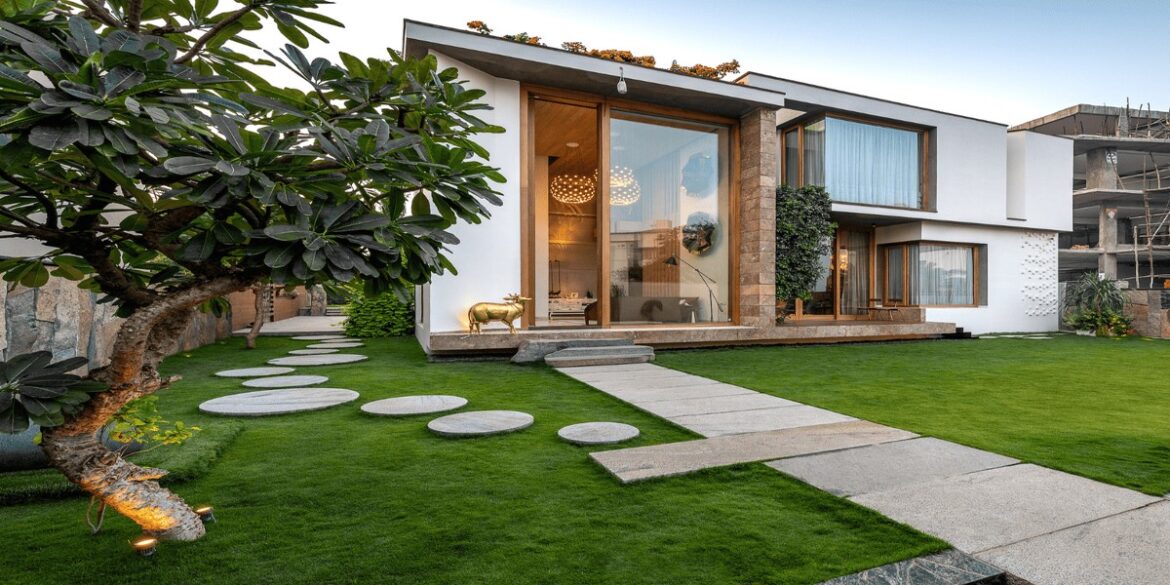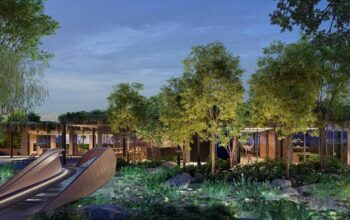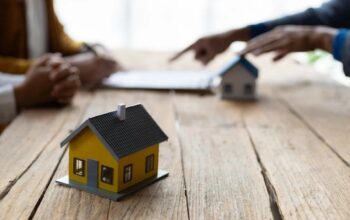As the demand for environmentally responsible living grows, homeowners in Thousand Oaks are increasingly seeking ways to incorporate eco-conscious design into their homes. With sustainability taking center stage, building or renovating homes with green practices has become more than just a trend—it’s a commitment to a future where homes can be both luxurious and environmentally friendly.
Incorporating sustainable building practices into homes not only enhances the property’s value but also significantly reduces environmental impact. Whether you’re in the early stages of building your dream home or looking to upgrade your existing space, these green homes in Thousand Oaks exemplify how eco-consciousness can seamlessly blend with style, comfort, and efficiency.
Let’s dive into the top 5 sustainable building practices that are transforming homes in Thousand Oaks.
1. Energy Efficiency: The Foundation of Sustainable Living
Energy efficiency is the cornerstone of sustainable home design. Modern homes in Thousand Oaks are focusing on reducing energy consumption while ensuring maximum comfort for residents. One of the most significant ways to achieve this is by integrating energy-efficient systems and materials into the home’s construction.
Solar Power Integration
One of the most popular ways to build an energy-efficient home in Thousand Oaks is through the installation of solar panels. Southern California’s abundant sunshine makes solar energy a natural fit for homeowners. Solar power helps reduce dependency on non-renewable energy sources, cutting down electricity bills while decreasing carbon footprints.
Incentives such as tax rebates and credits also make solar installations a cost-effective choice for many residents. By harnessing the power of the sun, homes can become self-sufficient in energy production, contributing to a greener and more sustainable future.
Energy-Efficient Windows and Insulation
Beyond solar power, proper insulation and energy-efficient windows are critical for minimizing energy loss. Many green homes in Thousand Oaks are designed with high-performance windows that reduce heat transfer, keeping homes cooler in the summer and warmer in the winter without over-reliance on heating or cooling systems. Similarly, advanced insulation materials, such as spray foam or recycled cotton, create a tighter seal in walls, attics, and floors, ensuring minimal energy waste.
2. Sustainable Materials: Building with Nature in Mind
Sustainable architecture prioritizes the use of materials that are renewable, locally sourced, and have minimal environmental impact. When designing or renovating a home in Thousand Oaks, choosing eco-friendly real estate materials can dramatically reduce the carbon footprint of the construction process.
Recycled and Reclaimed Materials
Incorporating recycled or reclaimed materials is a popular sustainable practice in high-end home construction. Whether it’s reclaimed wood for flooring or recycled metal for framing, these materials not only lessen the demand for new resources but also add a unique character to the home.
Reclaimed wood, for instance, is often sourced from old barns, factories, or warehouses, providing a rustic yet sophisticated aesthetic. By reusing these materials, builders reduce deforestation and energy consumption associated with the production of new lumber.
Sustainable Timber and Bamboo
For new wood products, opting for sustainably harvested timber is essential. Certified by organizations such as the Forest Stewardship Council (FSC), sustainably harvested wood ensures that forests are managed responsibly, preserving ecosystems for future generations.
Bamboo is another excellent sustainable alternative to traditional hardwood. As one of the fastest-growing plants on the planet, bamboo can be harvested without causing deforestation. Its durability and versatility make it an attractive option for flooring, cabinetry, and even furniture in eco-friendly real estate developments.
3. Water Conservation: Smart Design for a Drier Future
Water conservation is a critical component of sustainable building practices, especially in regions like Thousand Oaks where droughts are a concern. By incorporating water-saving technologies and smart landscaping choices, homeowners can drastically reduce water usage without compromising on luxury.
Greywater Recycling Systems
One of the most innovative solutions in sustainable home design is the greywater recycling system. These systems capture water from sinks, showers, and washing machines, which can then be treated and reused for irrigation or toilet flushing. This reduces overall water consumption and helps preserve local water resources.
Greywater systems are becoming increasingly popular in sustainable architecture, as they allow homeowners to maintain lush gardens and beautiful landscapes while adhering to water conservation principles.
Drought-Resistant Landscaping
Known as xeriscaping, drought-resistant landscaping is a smart way to maintain a beautiful outdoor space while minimizing water use. Xeriscaping emphasizes the use of native plants that thrive in dry conditions, reducing the need for irrigation. In green homes in Thousand Oaks, you’ll often see drought-tolerant plants like lavender, succulents, and California poppies incorporated into the landscape design.
By reducing the need for traditional lawn care, homeowners not only save water but also reduce the energy and chemicals used in maintaining their outdoor spaces, contributing to an overall more sustainable lifestyle.
4. Indoor Air Quality: Prioritizing Health and Wellness
A truly sustainable home isn’t just about protecting the environment—it’s also about promoting the health and well-being of its occupants. Sustainable homes are designed to maximize indoor air quality by minimizing the use of harmful materials and ensuring proper ventilation.
Non-Toxic Building Materials
In sustainable homes, it’s crucial to use low-VOC (volatile organic compound) paints, adhesives, and finishes. VOCs are chemicals that easily become vapors or gases, contributing to indoor air pollution and potentially causing health issues. Low-VOC products are safer for both the environment and the inhabitants, ensuring cleaner air inside the home.
In sustainable architecture, non-toxic materials are also incorporated into furniture and finishes, with many homeowners opting for natural fibers, untreated wood, and organic textiles to further improve air quality.
Smart Ventilation Systems
Another key aspect of maintaining good indoor air quality is the implementation of smart ventilation systems. These systems regulate airflow, ensuring that fresh air circulates through the home while removing pollutants and excess moisture.
In energy-efficient homes, proper ventilation is essential, as highly insulated buildings can trap air, leading to a build-up of allergens, mold, and pollutants. By integrating advanced HVAC systems with smart technology, homes can maintain a balance between energy efficiency and air quality, creating a healthier living environment.
5. Sustainable Architecture and Design: A Holistic Approach
Sustainability in home design goes beyond energy efficiency or eco-friendly materials—it encompasses a holistic approach to how the home interacts with its environment. Sustainable architecture in Thousand Oaks is about creating spaces that are not only visually stunning but also thoughtfully designed to minimize environmental impact.
Passive Solar Design
Passive solar design is a practice where homes are built to naturally regulate temperature by taking advantage of sunlight. By orienting the home in such a way that it captures sunlight during the winter and blocks it during the summer, passive solar design reduces the need for artificial heating and cooling systems.
Many energy-efficient homes in Thousand Oaks are designed with large south-facing windows to maximize natural light and warmth. Overhangs, shades, and thermal mass materials like concrete or stone are also used to regulate indoor temperatures, ensuring that homes remain comfortable year-round without excessive energy consumption.
Green Roofs and Living Walls
Green roofs and living walls are innovative features of sustainable architecture that integrate nature directly into the home’s design. Green roofs are covered with vegetation, which helps to insulate the home, reduce stormwater runoff, and provide a habitat for local wildlife. Living walls, on the other hand, are vertical gardens that can be installed inside or outside the home, improving air quality and adding a stunning visual element.
In luxury homes in Thousand Oaks, these features not only reduce environmental impact but also create a beautiful, natural aesthetic that enhances the home’s appeal. They offer an oasis of greenery in an urban setting and contribute to the overall sustainability of the property.
Conclusion: Sustainable Living in Thousand Oaks
As the demand for eco-friendly real estate grows, Thousand Oaks is becoming a leader in sustainable home design. By adopting these top five sustainable building practices, homeowners can reduce their environmental footprint while creating beautiful, efficient, and comfortable living spaces.
From energy-efficient homes powered by solar energy to landscapes designed with water conservation in mind, sustainable homes in Thousand Oaks offer a blueprint for environmentally conscious living. And with the guidance of a Thousand Oaks Real Estate Agent, you can find or design a home that aligns with both your values and your vision for a sustainable future.
Whether you’re building from the ground up or making eco-friendly upgrades to an existing property, these sustainable practices not only benefit the environment but also enhance your quality of life, increase property value, and create a healthier home for generations to come. Welcome to the future of green living in Thousand Oaks—where sustainability meets elegance and innovation.




